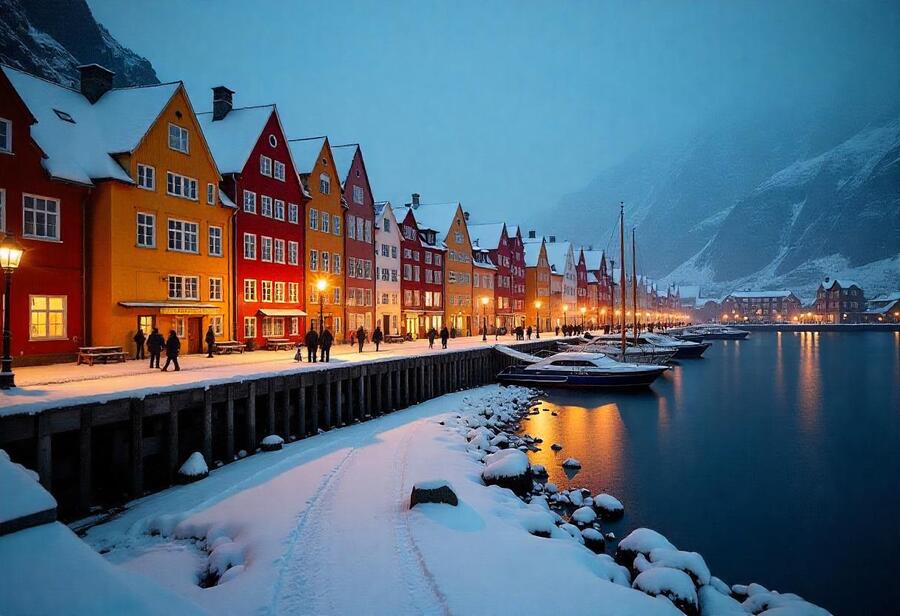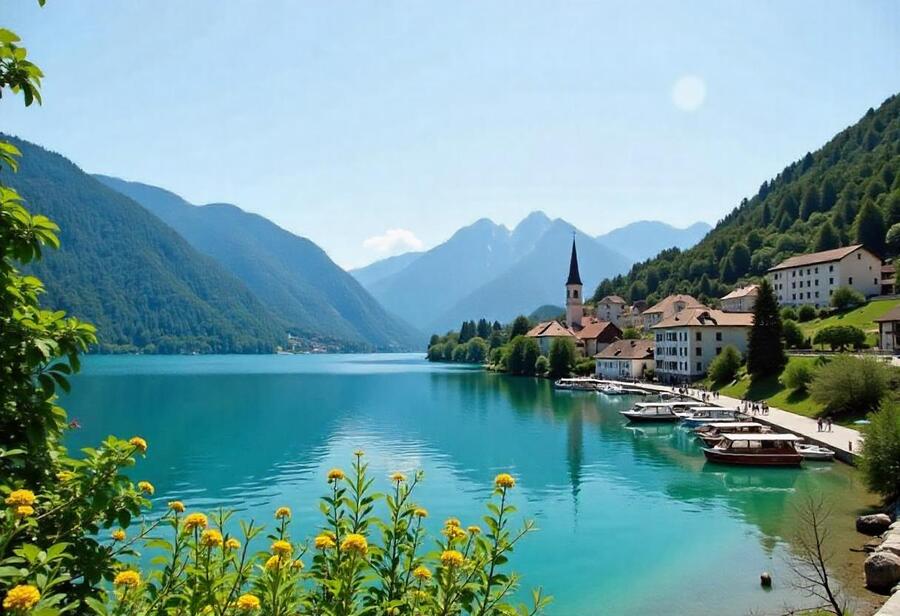≡-Norway Introduces Visitor Contribution Tax in 2026, Aiming to Balance Record-Breaking Tourism with Environmental Sustainability and Infrastructure Development – Viral of Today
<> Viral of Today <>
Home » NORWAY TRAVEL NEWS » Norway Introduces Visitor Contribution Tax in 2026, Aiming to Balance Record-Breaking Tourism with Environmental Sustainability and Infrastructure Development Saturday, June 21, 2025Norway, known for its jaw-dropping landscapes—from the towering cliffs of Preikestolen to the idyllic beauty of Geirangerfjord—has long been a favorite destination for travelers seeking both breathtaking views and outdoor adventures. In 2024, the country reached a new milestone, welcoming 12.4 million foreign visitors who stayed overnight, marking a 12 percent increase from the previous year, according to Statistics Norway. As the nation continues to attract record numbers of tourists, it faces the challenge of balancing tourism growth with environmental preservation and infrastructure capacity.To address the increasing pressure on its natural resources and public services, Norway has unveiled plans to introduce a visitor tax, scheduled to take effect in 2026. This new “visitor’s contribution” will be levied on overnight stays in hotels, guesthouses, short-term rentals, and cruise ships. The fee will be capped at 3 percent of the total cost, though travelers using personal camper vans, tents, or boats will be exempt from the tax.Rather than being a national policy, the tax will be implemented selectively in areas experiencing high volumes of tourism. The scheme will allow individual regions and cities to voluntarily opt in, making it a tailored solution for locations that face significant challenges related to mass tourism. The local governments of these areas will have the freedom to decide whether the tax is necessary based on the strain tourism places on public infrastructure.Revenue from the visitor’s contribution will be allocated solely to tourism-related infrastructure projects, ensuring that the funds directly address the challenges posed by increased visitation. These projects will focus on maintaining public amenities such as restrooms, constructing additional parking spaces, improving signage, and ensuring that hiking trails are properly maintained. By focusing the funds on preserving the quality of the visitor experience, Norway aims to safeguard the very landscapes that draw tourists to the country.For regions wishing to implement the tax, there will be an application process, which requires them to demonstrate that tourism has placed a strain on local resources. Additionally, the areas must outline how they plan to use the tax revenue, ensuring that it is spent exclusively on enhancing tourism infrastructure rather than general municipal budgets. The goal is to ensure that the additional funds directly contribute to improving the quality of life for both residents and visitors.Some of Norway’s most popular destinations, such as Lofoten—famous for its picturesque fishing villages and outdoor recreational activities—and Tromsø, known for its Northern Lights displays, have already expressed their intention to participate in the new tax scheme. These regions are regularly visited by cruise ships, and the large number of visitors often exceeds the local population, placing significant pressure on local services.Norway is not alone in recognizing the need to address overtourism. Other cities and countries around the world are increasingly turning to tourism taxes to mitigate the impact of mass tourism. In Europe, cities like Barcelona, Venice, and Lisbon have been at the center of debates about overtourism, with locals expressing frustration about overcrowding and the disruptions caused by large numbers of visitors. Many of these destinations are now looking to taxes as a way to manage visitor numbers and fund necessary improvements to local infrastructure.The idea of tourism taxes is not new. Several countries and regions have already introduced similar measures to help fund the infrastructure needed to cope with the growing demands of tourism. Venice, for example, introduced a €5 (about US$6) entry fee for day visitors in 2024 and is considering increasing it to discourage overcrowding. Similarly, the Greek islands of Santorini and Mykonos introduced a €20 (roughly US$23) tax on cruise passengers during the high season. These initiatives have proven effective in raising funds for infrastructure while also limiting the negative impacts of overtourism.Norway’s decision to implement the visitor’s contribution tax aligns with a growing global movement towards more sustainable and responsible tourism. The goal is not to discourage travelers, but to ensure that tourism can continue to thrive while preserving the environment and maintaining a high quality of life for locals. The funds raised by the tax will be reinvested into improving the infrastructure that supports both residents and visitors, creating a more balanced and sustainable tourism model.One of the key benefits of the new tax is that it will ensure that the areas most affected by tourism will receive the financial support they need to cope with the pressures of increased visitation. This includes not only preserving the natural beauty that attracts tourists but also ensuring that local residents are not burdened by the negative effects of tourism, such as overcrowding and the depletion of public resources.Additionally, by earmarking the revenue for specific infrastructure projects, Norway ensures that the funds will be used effectively to maintain the appeal of the country as a tourist destination. These improvements will benefit tourists by providing better services, and they will also improve the overall quality of life for locals, who often bear the brunt of the demands placed on public resources by tourism.As Norway moves forward with its visitor’s contribution tax, the country is setting an example for other nations looking to manage the challenges of overtourism. By allowing local governments to implement the tax based on regional needs and by earmarking the funds for specific projects, Norway is demonstrating that tourism taxes can be an effective tool for balancing the needs of the economy, the environment, and local communities.In conclusion, Norway’s introduction of the visitor’s contribution tax represents a thoughtful and proactive approach to managing tourism in a way that benefits everyone involved. By investing the funds generated by this tax into improving the country’s tourism infrastructure, Norway is ensuring that it remains an attractive destination for travelers while also protecting its natural wonders and ensuring that the local communities that support tourism are not overwhelmed by the pressures of mass visitation. As more destinations around the world recognize the need for sustainable tourism practices, Norway’s initiative provides a valuable model for balancing economic growth with environmental and social responsibility.
This information will surprise you!
See also
- Read until the end to discover everything.
- Important information you need to know.
- Interesting facts and helpful tips.
Conclusion
Did you enjoy the news? Keep following us daily!













